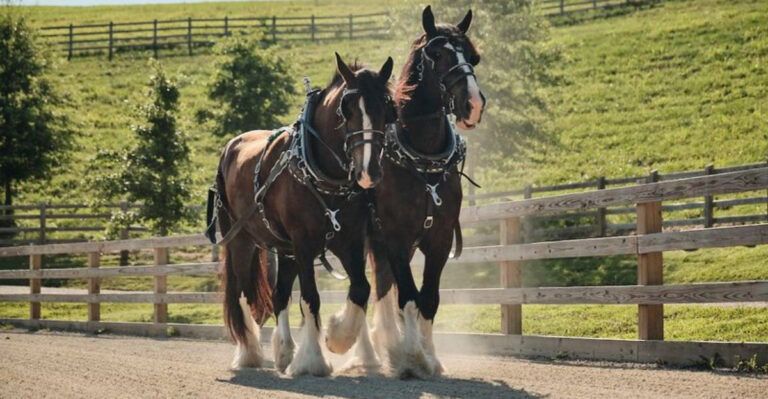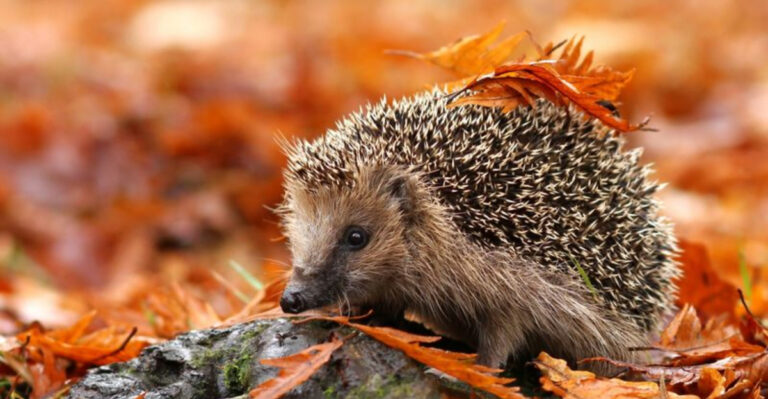15 Reasons Some Bird Feeders Attract More Visitors
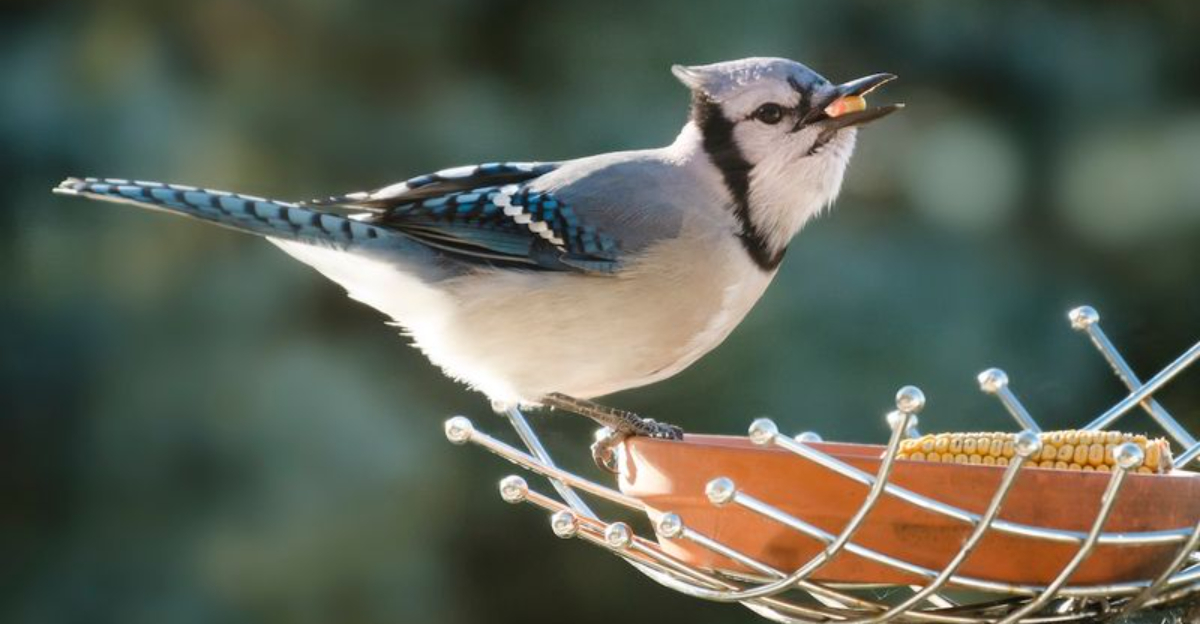
Ever wondered why your neighbor’s yard buzzes with colorful birds while yours remains eerily quiet? The secret might be in the feeder!
Bird watching brings joy to millions of backyard enthusiasts, but not all feeding stations are created equal. Understanding what makes certain feeders irresistible can transform your yard into a lively avian hotspot that birds can’t resist.
1. Fresh Seed Supply
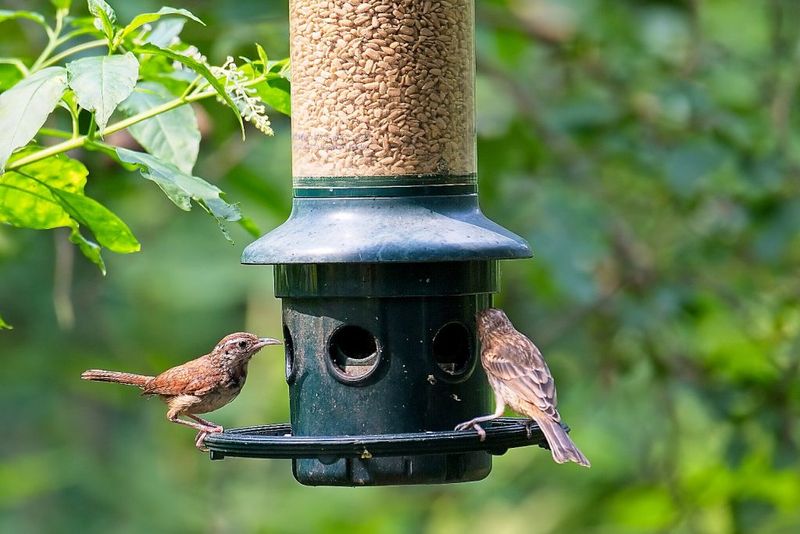
Birds have a knack for detecting stale or moldy seeds. When feeders contain fresh, high-quality seed, word spreads quickly through the bird community.
Regular cleaning and seed replacement – ideally weekly – prevents mold growth that can harm birds and drive them away. Remember that uneaten seed at the bottom often spoils first, so empty completely before refilling.
2. Strategic Placement
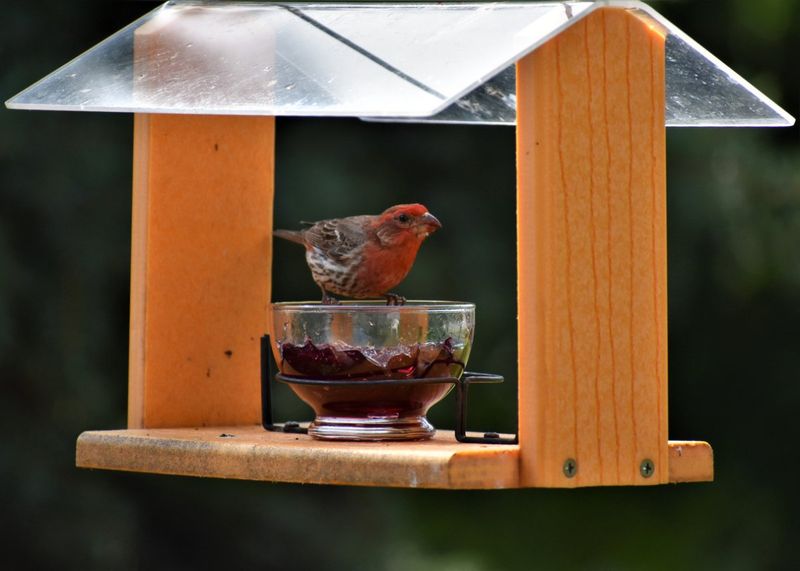
Location can make or break your bird-feeding success. Feeders placed about 10-12 feet from shrubs or trees provide birds with quick escape routes from predators while staying visible.
Morning sun exposure helps birds find feeders early in the day when they’re hungriest. Avoid placing feeders too close to windows – this prevents window strikes that injure or kill millions of birds annually.
3. Water Source Nearby

A simple birdbath near your feeder can double or triple visitor numbers! Birds need water not just for drinking but also for keeping their feathers in top condition.
Moving water attracts even more attention – consider adding a small solar fountain or dripper. During winter, heated birdbaths become rare finds for birds, making your yard an essential pit stop in the neighborhood.
4. Squirrel-Proof Design

Squirrels can empty a feeder in hours, leaving nothing for the birds! Feeders with weight-activated perches close when heavier creatures land, preserving seed for lightweight birds.
Baffles – dome or cylinder-shaped barriers – prevent squirrels from reaching feeders from above or below. Some birds actually avoid feeders frequently raided by squirrels, sensing the competition isn’t worth their energy.
5. Multiple Feeder Types
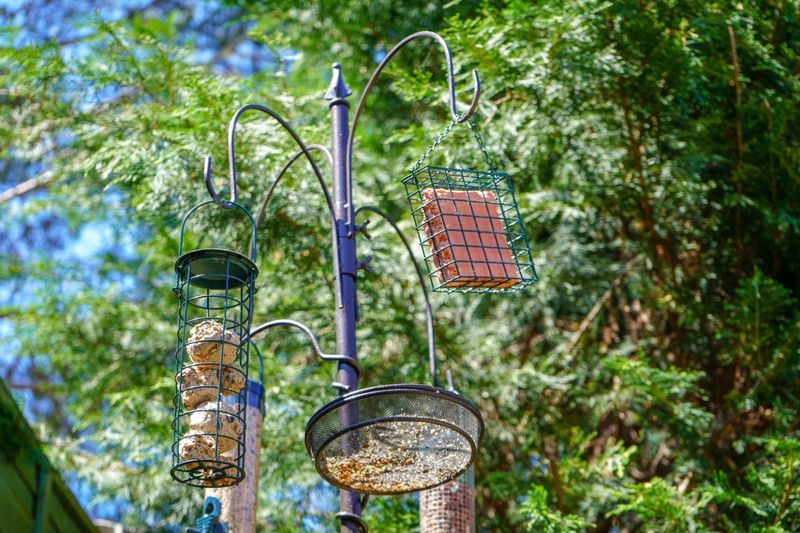
Different birds prefer different dining setups! Tube feeders attract finches and chickadees, while platform feeders bring in cardinals and jays. Suet cages draw woodpeckers and nuthatches that rarely visit seed feeders.
Hummingbird feeders with nectar solutions add another dimension to your bird buffet. The more variety you offer, the more diverse your feathered guests will be.
6. Seed Variety

Black oil sunflower seeds might be the universal favorite, but offering a menu keeps birds coming back. Nyjer seeds attract goldfinches, while safflower brings cardinals without attracting squirrels.
Millet appeals to ground-feeding sparrows and juncos. Some premium mixes contain dried fruits and nuts that woodpeckers and bluebirds love. Experimenting with different seed types helps you discover what local birds prefer.
7. Consistent Filling Schedule
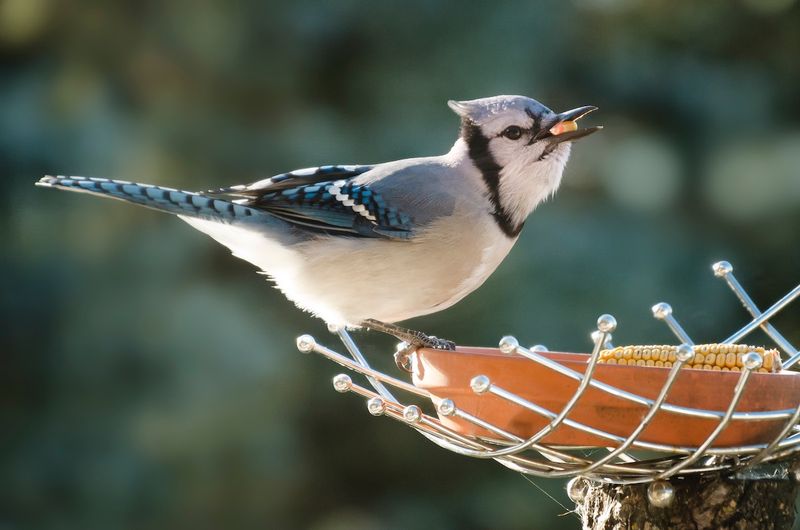
Birds are creatures of habit and quickly learn which feeders provide reliable meals. An empty feeder might be crossed off their mental map after several disappointing visits.
Keeping feeders filled, especially during early morning and late afternoon when feeding activity peaks, establishes your yard as dependable. During harsh weather, consistent feeding becomes even more crucial as natural food sources dwindle.
8. Protection from Weather
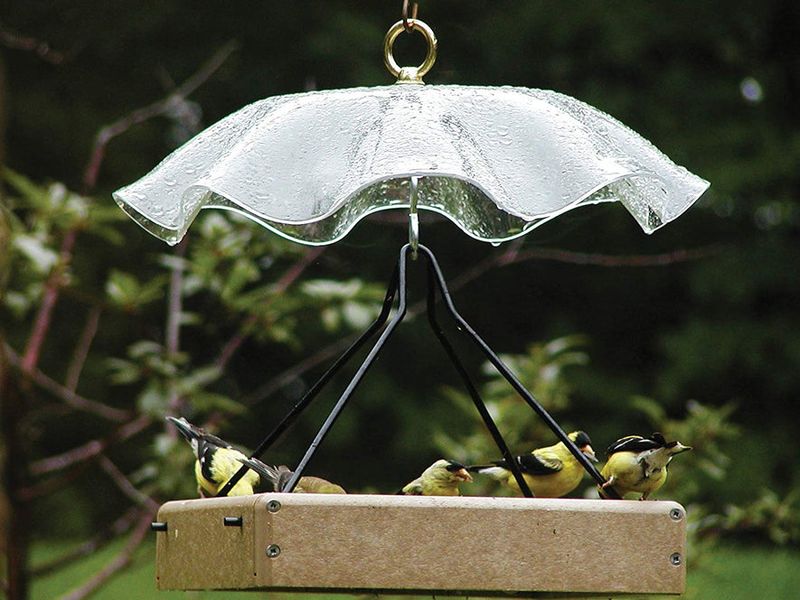
Feeders with roofs or domes allow birds to eat comfortably during rain or snow. This weather protection keeps seed dry and prevents clumping or molding that makes food inedible.
Some advanced feeders feature drainage holes to prevent water accumulation. Birds expend precious energy flying to feeders – they’re more likely to visit spots where they can eat without battling the elements.
9. Perch Comfort
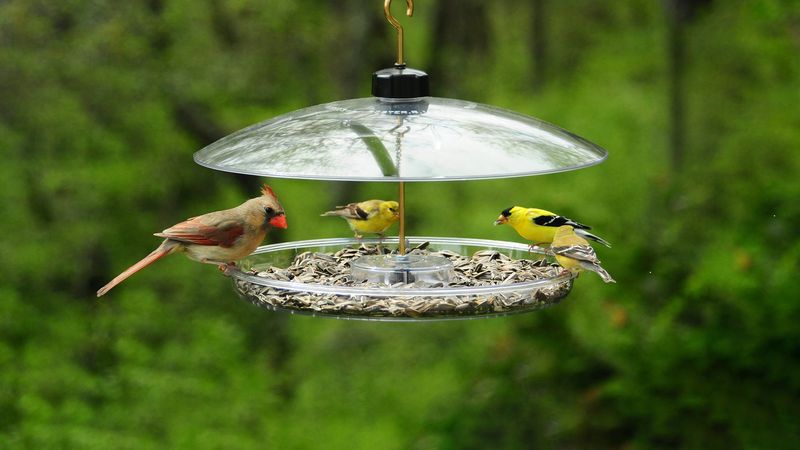
The length and position of perches dramatically affects which birds can feed comfortably. Longer perches accommodate larger birds like cardinals and grosbeaks that might otherwise skip your feeder.
Some feeders feature perches at different heights to serve various species simultaneously. Birds prefer stable perches where they can rest while eating rather than hovering or stretching awkwardly – comfortable diners stay longer and return often!
10. Native Plant Landscaping

Surrounding your feeder with native plants creates a bird paradise that offers natural food and shelter. Berry-producing shrubs like elderberry or viburnum complement feeders by providing essential nutrients seeds don’t contain.
Native grasses and flowers attract insects that parent birds need for their young. This natural buffet alongside your feeder creates an irresistible ecosystem that keeps birds returning year-round.
11. Regular Cleaning Routine
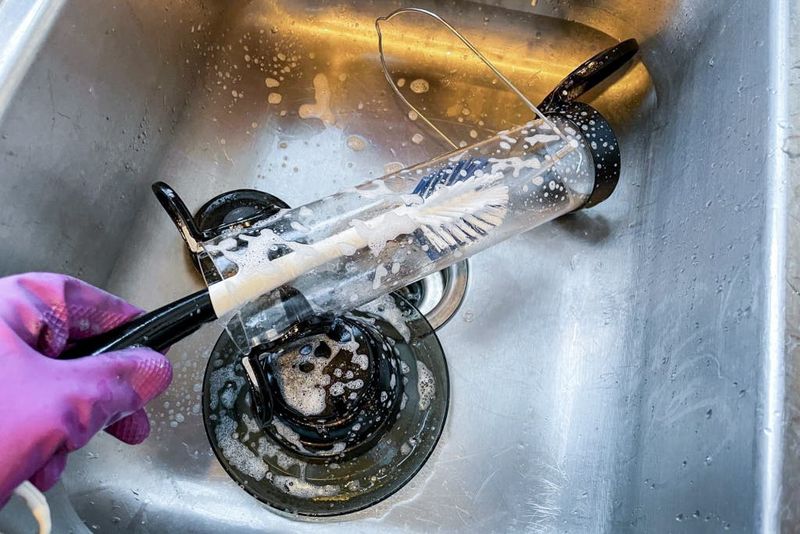
A clean feeder isn’t just attractive – it’s essential for bird health! Feeders should be scrubbed every two weeks with a mild bleach solution (1 part bleach to 9 parts water).
Moldy seed and droppings can spread diseases that devastate bird populations. Many bird enthusiasts keep multiple feeders so they can rotate clean ones in while others dry. Birds instinctively avoid contaminated food sources.
12. Predator Protection
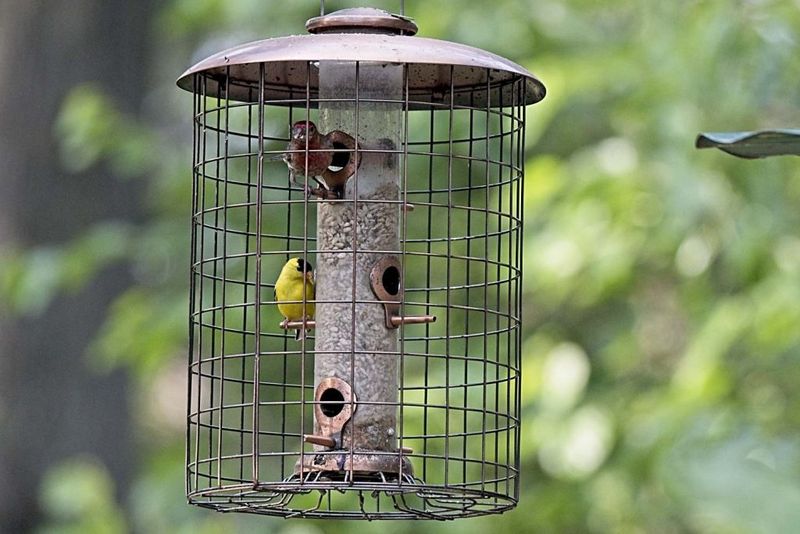
Hawks and cats view bird feeders as their personal buffets too! Feeders placed near dense shrubs give smaller birds quick escape routes when predators approach.
Window-mounted feeders should have protective covers extending above them. Some bird lovers install motion-activated sprinklers to deter cats. Birds constantly assess risk while feeding – they’ll choose the safest restaurants every time!
13. Year-Round Availability
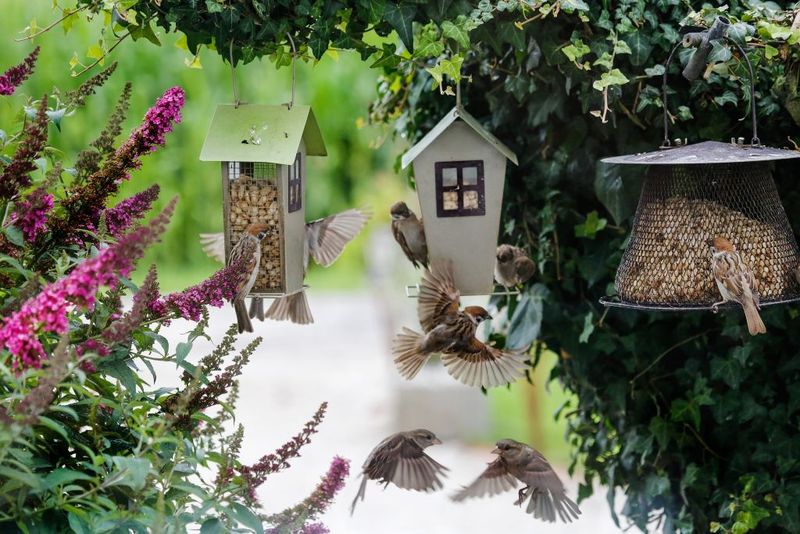
Many people mistakenly remove feeders during summer, thinking birds have plenty of natural food. In reality, summer brings nesting season when parent birds need reliable, high-energy food sources.
Winter feeding helps birds survive when natural foods are buried under snow. Birds develop seasonal feeding patterns – yards offering consistent food through changing seasons become essential stops on their mental map.
14. Noise and Disturbance Levels

Birds prefer peaceful dining experiences! Feeders placed away from high-traffic areas, noisy air conditioners, or busy streets attract more visitors, especially shy species like thrushes and warblers.
Households with outdoor cats should hang feeders at least 12 feet from the ground. Morning feeding sessions typically see more activity than midday when human activity peaks. Creating quiet zones around feeders dramatically increases visitation.
15. First-Bird Effect
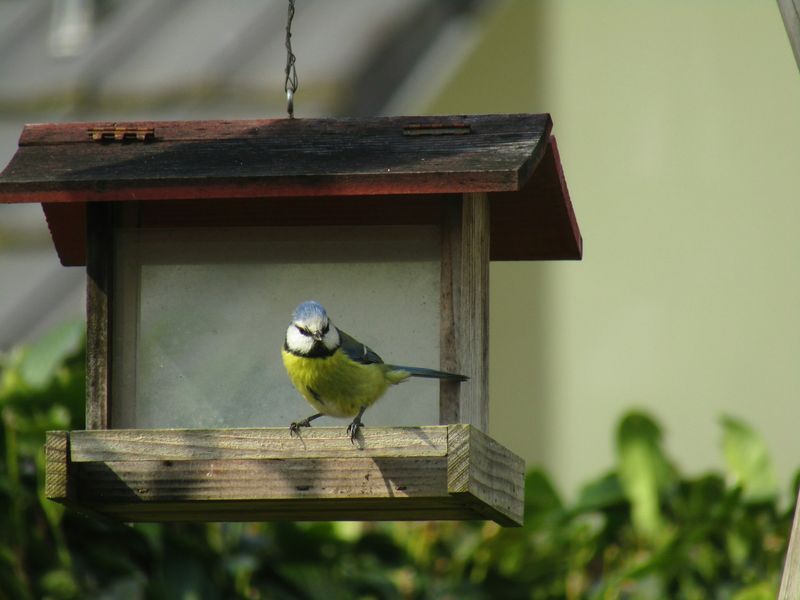
Birds are social creatures that watch each other! When one bird discovers your feeder, others notice and follow. Some bird enthusiasts use decoys or mirrors to create the appearance of feeding activity.
The first few days after installing a new feeder might see little action, but patience pays off. Once the first brave explorers find your offering, they’ll bring friends and family along for the feast.

